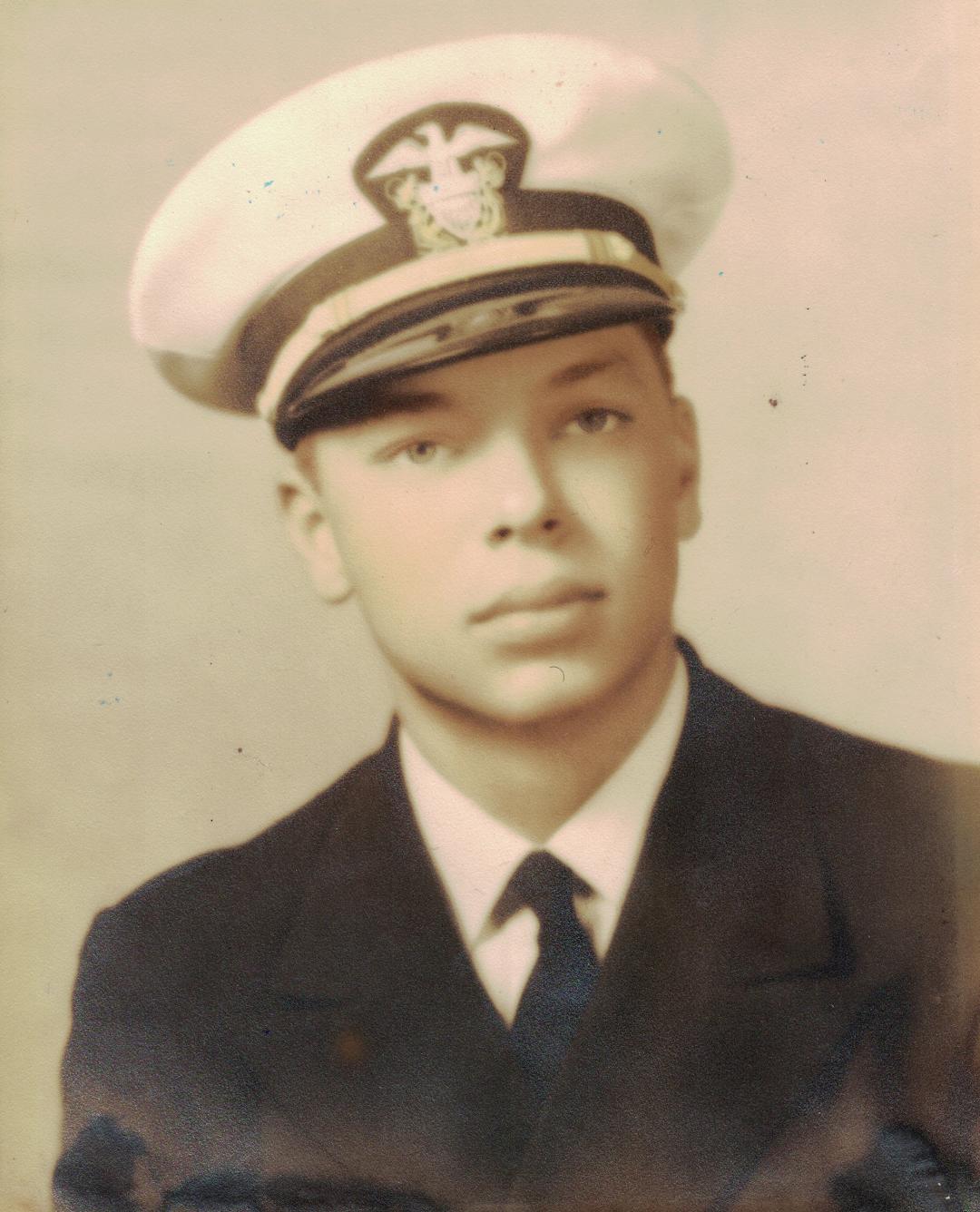BINGHAM-ROBERT
ROBERT CAROL BINGHAM

FIRST LIEUTENANT

LST ADVENTURES
Robert Carol Bingham
Prior to World War II, I was in the ROTC at the University of Florida. I was in the Field Artillery playing nursemaid to horses because the cadets assured that tanks were “just a passing fancy.” Threatened by the draft, I enlisted in the Navy V-12 program the day after Pearl Harbor. This kept me in college enabling me to finish my degree in three years, graduating in 1942.
The Navy sent me to an Officer’s training Program at Columbia University where I became a 90 Day Wonder and was commissioned as a “reserve officer and a gentleman” who serves at the pleasure of the president.
As an ensign I was made Executive Officer on LST 313. Officially LST stood for Landing Ship, Tank, but in Navy jargon this was referred to as a Large Slow Target. I was considered incompetent for the job by the Captain and relieved of that duty. The ill-fated LST 313 sailed without me for the invasion of Sicily where it was blown up with loss of all hands on board.
I was then made “Commodore” in charge of a flotilla of landing craft and went to Solomon’s Island, Maryland, on the Chesapeake Bay where we trained Seabees in underwater demolition.
My next assignment was to Evansville, Indiana, to commission LST 246. I was made First Lieutenant and ship’s navigator. In this role I was found competent. LST 246 sailed down the Ohio and Mississippi Rivers to New Orleans and from there through the Panama Canal to Hawaii.
As part of Rear Admiral Turner’s V Amphibian Corps in the Central Pacific, the ship made combat landings on Kwajalein and Eniwetok in the Marshall Islands. Typically we ran the ship onto the beach at full speed, opened the bow doors, and lowered the ramp to let troops drive their vehicles onto the beach, ready for battle. We tried to unload and get off the beach in 20 minutes, making room for the next wave of landing craft. It was during the Marshall Island landings that the US navy mastered the art of amphibious warfare.
Later we made a practice landing on the southwest side of Hawaii. During the landing my ship went aground and damaged one of our propeller shafts. We had to return to Pearl Harbor at slow speed while the other five ships in the flotilla went ahead and arrived at Pearl Harbor before us. When we arrived the next morning we could see a column of fire and smoke and saw our flotilla burning up at the pier. One ship left the pier, on fire, and sailed by us to get out to sea. We were the lucky ones. Four ships were lost with about 200 men. The cause of the fire was never determined.
In June and July of 1944, LST 246 made combat landings on Saipan and Tinian, and was returned once again to the Southwest Pacific Theater for transport duty along the shore of new Guinea. In September the ship was attached to Vice Admiral Wilkinson’s III Amphibious Force for the invasion of Peliliu. This battle is said to have cost almost as many American lives as the result on Omaha Beach in Normandy.
Next was the participation in the landings at Leyte Gulf and in January 1945 LST 246 was part of the convoy headed for Lingayen Gulf. The convoy was plagued by Japanese kamikaze planes. After Lingayen Gulf was secured I stood on deck and watched as several small landing craft came in and unloaded numerous cameramen and newsmen ashore. They scurried around and set up equipment while the landing craft backed off the beach. When all was ready, the landing craft once again came in and touched the beach and deliberately backed off a few feet son that general MacArthur could wade ashore through the surf for his historic “I have returned” photo. We Navy men were not impressed, but the event was of tremendous political importance among the Philippine people.
After the Philippine invasion LST 246 joined the combat landings on Okinawa. That battle started on April 1, 1945, and was waged for two months, being the most costly naval campaign of the war. My crew watched kamikaze attacks on larger ships all around us, but we remained unharmed. The Japanese did not think that LSTs were worth their trouble, where actually LSTs were the backbone of the war. A cruiser near us took a suicide attack, which struck the sick bay and killed all the medical personnel on board. We immediately dispatched our doctor and corpsmen to the cruiser. This prevented us from doing casualty evacuations from the shore. Instead we picked up empty ammunition cans from the bombardment ships and acted as a filling station for other small craft.
The ship was damaged on a reef at Okinawa and had to return to San Francisco for repairs. I flew ahead with the repairs orders, from Hawaii to San Francisco on the famous flying boat, the China Clipper.
With the end of the war on August 14, 1945, LST 246 was decommissioned and loaned to the Japanese to repatriate Japanese stranded on Pacific Islands.
I served one more year at the Long Beach Separation Center in California, explaining the benefits of the GI Bill to servicemen and signing their discharge papers. I married, was discharged as a Lieutenant, and went on to pursue further education at University of California, Berkeley.
Bob was born in Pensacola Florida. He earned a BA Degree in Sociology and Economics at the University of Florida and a MA Degree in Anthropology and Economics at the University of California Berkeley. His professional career was in city planning.

